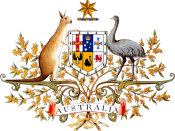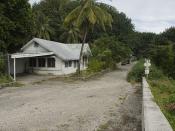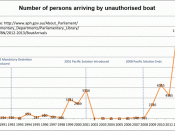The Australian government uses a rhetoric of fear when discussing refugees and asylum seekers by using such terms as 'illegal', 'unauthorised entry', 'SIEV' (suspected illegal entry vessel), and 'terrorist', putting into the minds of Australians the misconception that refugees who seek asylum in our country are somehow performing an illegal act. It is the government who is performing illegal acts against these people. There are many NGOs and high profile individuals who have clearly stated that the actions of the Australian government in their handling of the 'Pacific Solution' violate international law, as well as Nauruan, Papua New Guinean and Australian law. Furthermore, not only is the 'Pacific Solution' illegal on many grounds; Australia's whole immigration policy continuously breaches laws and conventions, both national and international.
On August 26th 2001 a leaky wooden boat full of refugees seeking asylum in Australia were rescued by the Norwegian freight ship Tampa off the coast of Christmas Island.
Australia responded by declaring that none of the asylum seekers would land on Christmas Island or indeed on any Australian soil. When Arne Rinnan, captain of the Tampa, attempted to land at Christmas Island, he found his ship surrounded and taken control of by the Australian SAS. Nearly 2 weeks later, following a frenzy of political deals, the asylum seekers were transferred onto the HMAS Manoora and sent to Nauru - a 'hellish...lunar landscape... left barren after years of phosphate mining' (Pace 2002 quoted in PDPS288 2005:33). Australia had struck a deal with Nauru; the asylum seekers would be detained on the tiny island nation, 5000km northwest of Sydney in the middle of the Pacific Ocean. Later a similar deal would also be made with Papua New Guinea, who agreed to detain asylum seekers on Manus Island. New Zealand also agreed...


